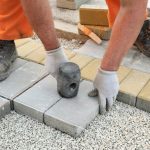When manufacturing such components as gears, heat treating and quenching are the most critical of all methods to ensure a durable, reliable result. The two operations form part of the overall hardening process. Quenching is essential to take hot steel to a hardened state rapidly. A quenching heat treatment produces Martensite – a hardened phase of steel.
Quenching Media
Quenching requires a media to help produce the necessary hardening of the metal. Various media exist for this purpose. The two most severe and common are the following liquids:
1. Water – best for non-ferrous metals
2. Brine – most suited for Low-alloy and carbon steels
Other media or “quenchants” possible for this “controlled extraction of heat” are oil and various synthetic products. They are best suited for oil-hardened steels. A gas such as air (forced or still) or solid may also be employed as long as it removes heat from the component.
The Three Stages of a Liquid Quenching Heat Treatment
The quenching process generally exhibits three separate but related stages when using a liquid quenchant. These consist of the following:
1. Stage A: This is the Vapor or Vapor Blanket stage. Off the 3 stages, it is the slowest and reflects the character of the initial contact between the heated part and the liquid quenchant.
2. Stage B: This is the Boiling or Nucleate Boiling stage. It is the fastest stage of the quenching process.
3. Stage C: The Convection stage is the final stage of the process. It involves the removal of heat through convection.
The Quenching Heat Treatment
If the need is to make a steel or cast iron component durable, strong and hard, the most common process involves a quenching heat treatment. A liquid quenching, using water, brine or oil, helps achieve this goal. After proceeding through three basic stages or phases, the component emerges tough, resilient and hardened for placement in challenging and harsh environments.





